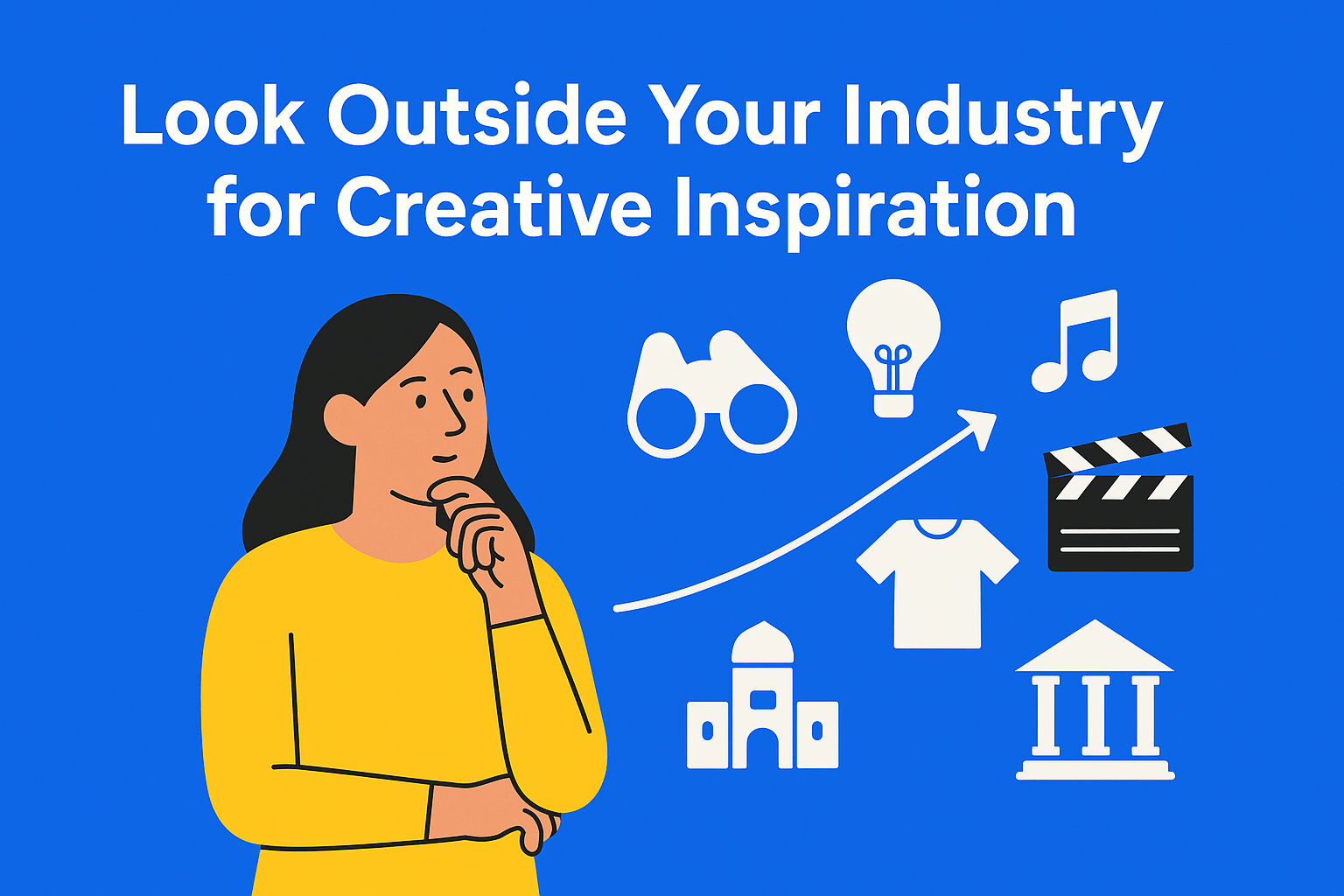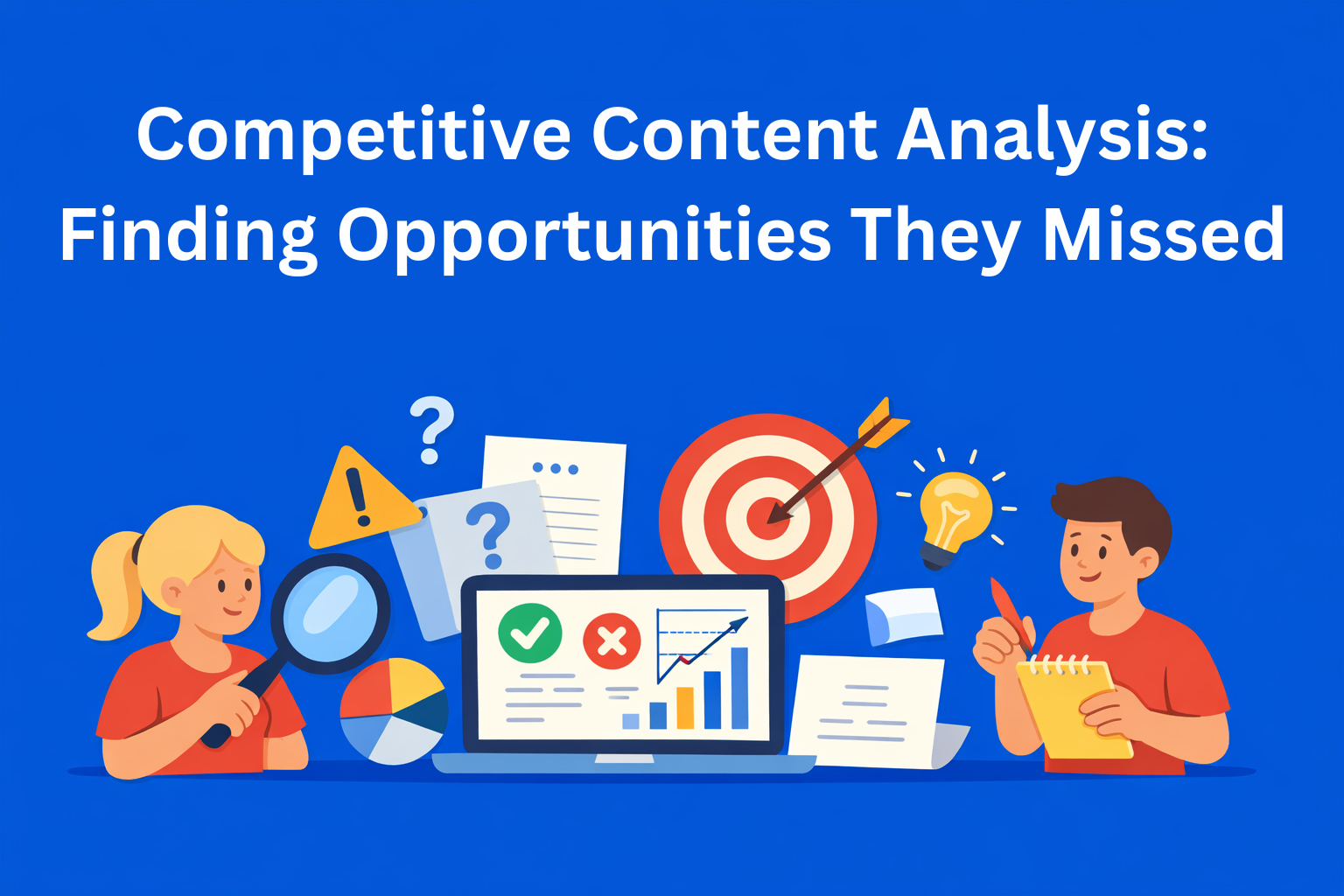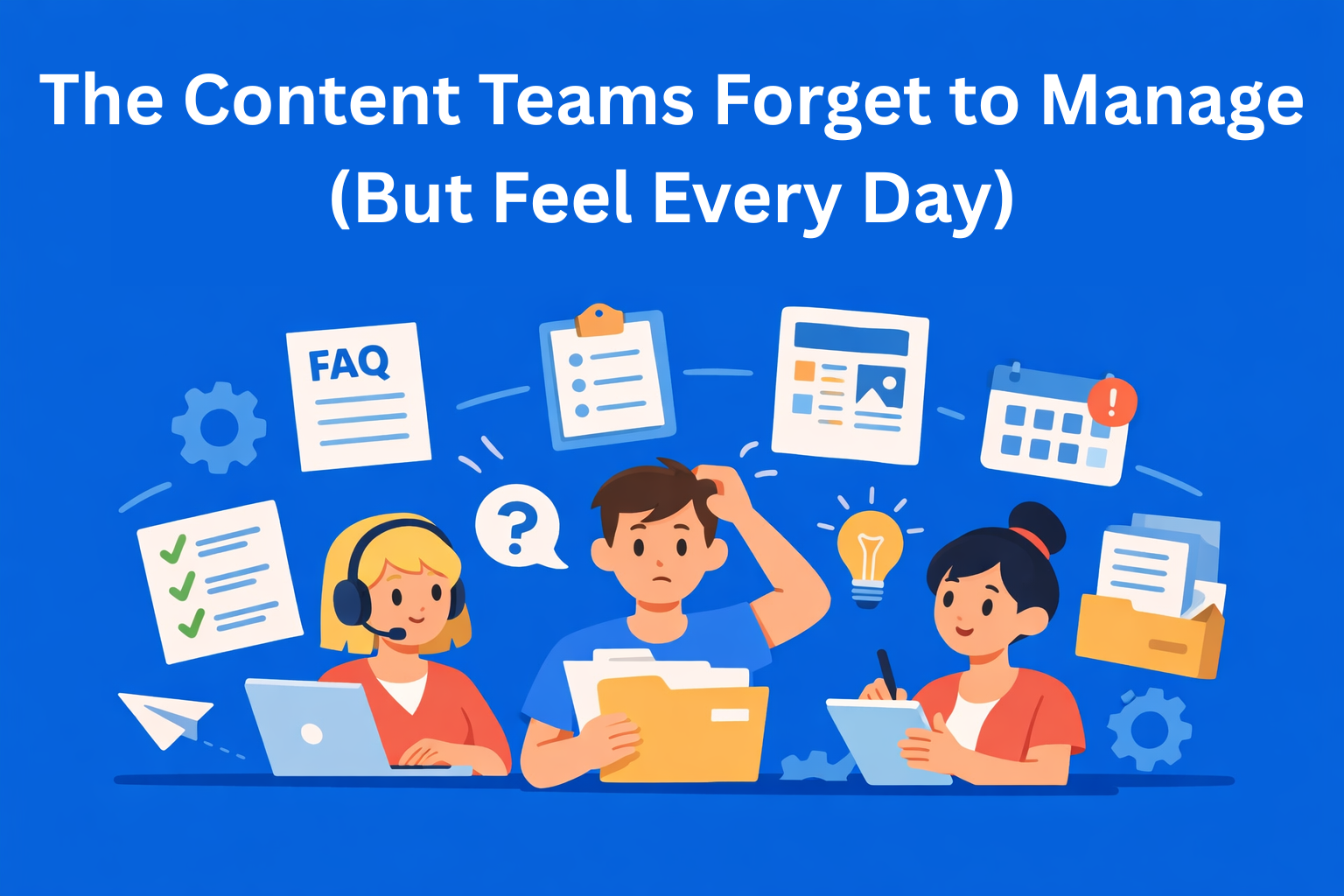Looking Outside Your Industry: Borrowing Inspiration from Unexpected Places
The best content ideas don't have to come from your own industry. By looking outside your bubble (at gaming, hospitality, sports, or even architecture), you discover new ways to tell stories and stand out while everyone else recycles the same playbook.

When content teams get stuck, their first instinct is almost always to look inward - at their own competitors, their own niche, and the same playbooks everyone else is using. But if you keep looking in the same direction as everyone else, you’ll keep creating the same kind of content as everyone else.
The most innovative content often doesn’t come from inside the industry at all - it comes from ideas stolen (politely) from somewhere completely unrelated. The teams that stand out borrow from the unexpected: gaming communities, hospitality, fashion houses, music fandoms, filmmaking, tech product launches, even how street artists build hype before a reveal.
When you step outside your own bubble, you don’t just get inspiration - you get an entirely different way of thinking about audience, attention, and loyalty.
Key Takeaways
- Inspiration dries up when you only look inward - Sticking to your own industry leads to repetitive, undifferentiated content that blends in.
- The best ideas come from outside your bubble - Borrowing from industries like gaming, film, or hospitality unlocks fresh thinking around loyalty, experience, and emotional engagement.
- Steal the principle, not the format - It’s not about copying what others do; it’s about understanding *why* it works and adapting it for your own audience.
- Great teams act like cultural curators - They gather ideas from diverse communities and turn them into insight-driven content that stands out.
- Inspiration needs a workflow - Capture external sparks in a system (like EasyContent) so they become strategic inputs, not just random ideas that get lost.
Why Inspiration Dries Up When You Only Look at Your Own Industry
If everyone in your industry reads the same blogs, follows the same experts, and copies the same tactics… you eventually end up with content that all sounds identical. Same formats, same tone, same angles, just slightly rearranged vocabulary.
It’s not a lack of creativity - it’s a lack of new inputs.
By stepping outside the industry, you start encountering:
- Different pacing
- Different emotional hooks
- Different storytelling logic
- Different ways of creating connection
- Different expectations for engagement
These are often impossible to invent internally - you can only borrow them from elsewhere.
Great Content Teams Are Constant Cultural “Collectors”
If you look at the best content teams, they behave less like marketers and more like anthropologists. They watch how communities form, what makes fans obsess over something, where people feel belonging, and why certain experiences stick in memory.
A community-driven indie game might teach you more about audience loyalty than a B2B blog ever will. A Michelin restaurant’s menu rollout might teach you more about anticipation and storytelling than a marketing framework. A podcast might teach you pacing. A sports documentary might teach you narrative arc. A live concert might teach you how to “earn” emotional payoff.
Your industry is not a ceiling - it’s just your home base.
The Value of Borrowing, Not Copying
Looking outside your bubble doesn’t mean you imitate something one-to-one. You don’t need to make your B2B whitepaper feel like a Marvel trailer. But you can borrow Marvel’s pacing: setup → tension → reveal.
You don’t need to become a lifestyle brand to borrow hospitality’s lesson that experience ≠ information. The emotional tone matters as much as the content itself.
The point isn't to “act like another industry.”
The point is to translate what works somewhere else into a format that serves your audience.
What Makes Other Industries Such a Good Source of Inspiration?
Different industries optimize for different emotional outcomes - and that’s exactly why they’re so useful to learn from.
Gaming is a masterclass in immersion and loyalty. Hospitality shows how much experience and personalization matter beyond the surface. Architecture teaches restraint, simplicity, and how “framing” changes the way something is perceived. Sports are powered by narrative tension and belonging - people don’t just follow scores, they follow stories. Music shows how identity, rhythm, and emotional payoff build connection. And tech is great at clarity: onboarding, guidance, and reducing friction until an idea feels effortless.
These aren’t things you usually notice when studying B2B content or scrolling competitor blogs - but they’re the ingredients that make people care, not just look.
How to Actually Do This in Practice
Instead of trying to brainstorm inside a meeting room, build a habit of collecting ideas from outside your lane. Watch, observe, and ask: Why does this work here, and how could a version of it work for us?
There are a few ways to make this part of your process:
- Look for mechanics, not formats - “This feels immersive because…” not “We should also make a video game.”
- Study fan behavior, not just brand behavior - people, not companies, generate the strongest signals.
- Treat inspiration like research - not a happy accident when you happen to notice something.
Once you start seeing these patterns, you’ll realize content strategy is less about being “creative on demand” and more about being plugged into new sources of creativity.
Where EasyContent Fits Into This
If you want to pull inspiration from outside the industry consistently (instead of when someone remembers to), you need somewhere to capture it.
Inside EasyContent, teams often use documentation not just for guidelines and rules, but also as a living inspiration bank - a place to store examples, breakdowns, references, and lessons from outside your industry. That way, inspiration becomes part of the workflow, not something you hope someone remembers at the last minute.
You’re building a system where creativity is fueled by structure - not suffocated by it.
Conclusion
When you borrow from other industries, your competition can’t replicate you overnight because they don’t know where you got it from.
They’re still looking sideways at each other. You’re looking outward and ahead.
That’s what puts you in a category of your own.






